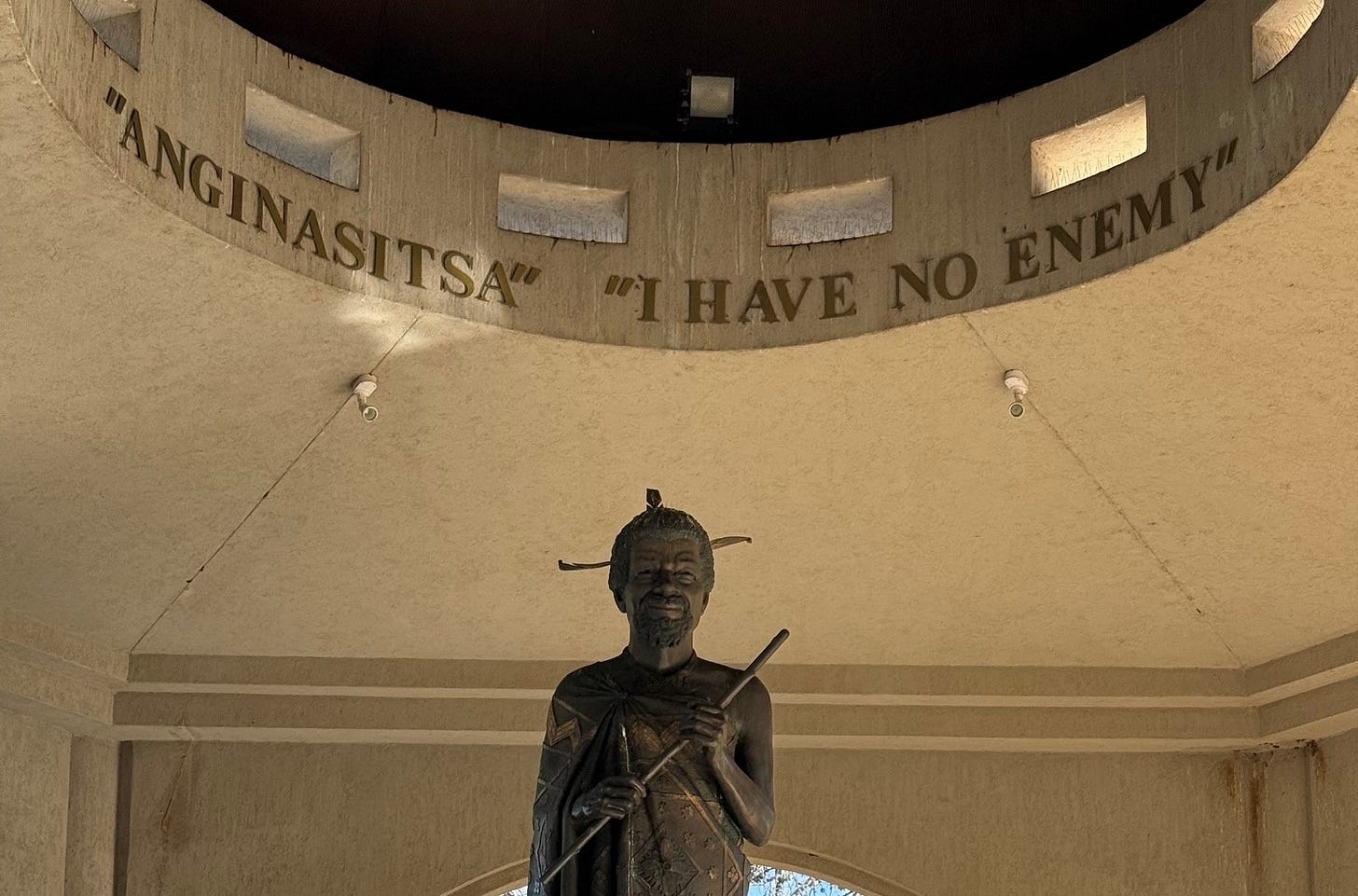Eswatini
Royal Kingdom of Culture and 'No Enemies'

Swaziland/Eswatini/Not South Africa
Driving through Eswatini (formerly Swaziland), it’s easy to forget that you’re still technically within the borders of South Africa—until you realize you’re not. This small kingdom, with a population of just 1.2 million people, is one of Africa's smallest nations. At the National Museum of Eswatini, I learned about the Swazi people’s long history of resisting absorption into South Africa. They feared that their unique culture and traditions would disappear, especially after enduring historic conflicts with the South African Boers, a settler group that tried to claim their land during British rule.
Eswatini eventually gained independence in 1968, reinstating its traditional monarchy, with the king at the heart of the nation. Today, Eswatini stands as Africa’s last absolute monarchy and one of only 6 remaining in the world (For curious souls, the remaining are Saudi Arabia, Brunei, Eswatini, Oman, and Vatican City.)
Warm summer and warmer smiles. True to its royal heritage, Eswatini offers a warm welcome to visitors—whether they’re on a brief stopover from South Africa’s Kruger National Park or, like me, visiting for work-related purposes. The country’s green landscapes, rolling hills, and perpetually mild, summer-like weather create a refreshing atmosphere that is hard to beat.
Smiles are abundant, and hospitality is authentic. From airport staff going the extra mile to help track down lost luggage (not uncommon!) to hotel employees sharing local stories during the scenic one-hour drive from Manzini Airport to Mbabane the capital —Eswatini’s people are genuinely kind and helpful.
You can safely stroll through town, hike up to the city’s waterfall on a peaceful Sunday morning, or take a drive or rock climb to the top of Sibebe Rock, the world’s largest granite dome, to watch the sunset over the rolling hills. Its very outdoor.
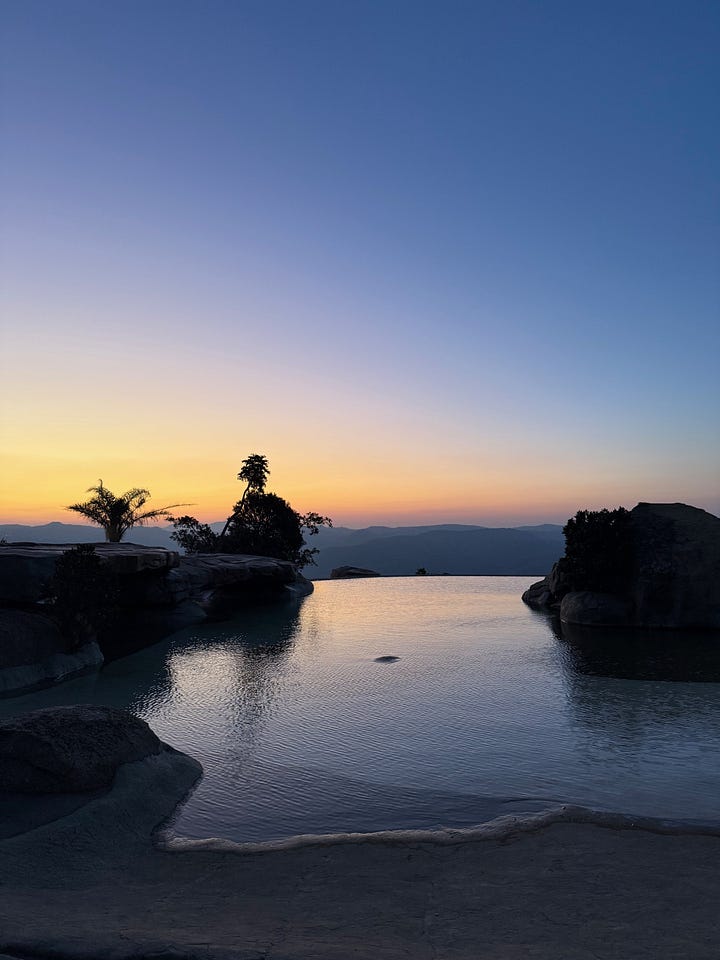
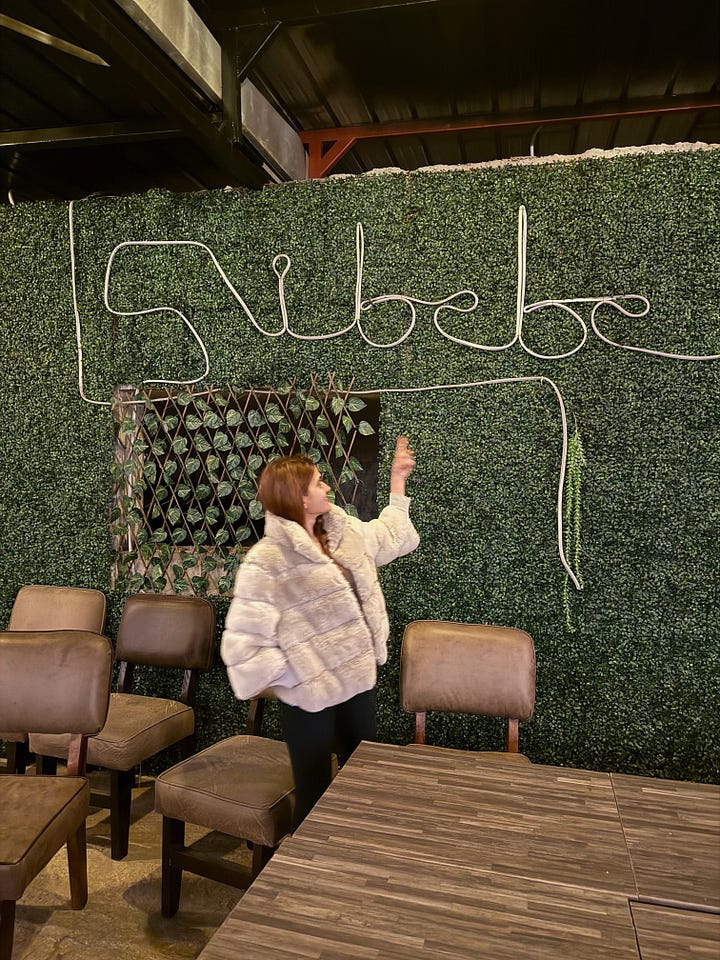
“I have no Enemy”. I visited the King Sobhuza II (former king and father of the current King Mswati III)’s memorial in Lobamba, and learned of King Mswati III. The king was one of the most revered rulers of Eswatini, having ruled for an incredible 82 years, through both British colonialism and the country’s eventual national independence
When asked how he was able to rule for such a long period with unwavering loyalty and no defections, he famously responded, “I have no enemy.” or ‘Anginasitsa’ in local language. I remember using this in one of meeting presentations the following day- to start the meeting in that spirit, and also to remind myself of higher goals
This statement encapsulated the essence of his leadership, which was rooted not just in political authority but also in his role as a spiritual and symbolic figure for the people of Eswatini- which is what the ‘institution of the king’ is even today . The role of the King extends beyond mere political leadership. It is deeply intertwined with the culture, traditions, and beliefs of the people, which is what I believe, in part, explains the permanence of the monarchy, despite changes in the world around it. Or this is my best explanation thus far.
Walking with Rhinos (One Day, Maybe). One of the most unique things you can do in Eswatini is a walking safari with white rhinos. Yes, on foot. It sounds intense—and it is—but it’s also a low-impact way to experience wildlife without disrupting the environment. Only a handful of parks offer this kind of safari because it requires the right terrain, weather, and, most importantly, expert guides who know exactly what they’re doing
I haven’t had the chance to try it myself (yet), but from everything I’ve heard, Mkhaya Game Reserve is the place to go. Their guides are incredibly well-trained in animal behavior and tracking, and yes, they’re also armed—for safety, not sport. They lead you through the bush, helping you spot wildlife from just meters away, all while making sure the animals (and you) are undisturbed and safe..
Cultural identity > all identity?
Visiting the Mantenga Cultural Centre and a traditional Swazi village gave me a deep insight into the cultural history and practices of Eswatini—from traditional attires to old healers and polygamous familial structures. It’s clear that culture runs deep here.
Walking around the country, I could see how these traditions still echo in daily life. People truly treasure their cultural identity. The country’s name change in 2018—from Swaziland to Eswatini, meaning ‘land of the Swazis’ (although some claim it was to differentiate from ‘Switzerland’!), participation by nearly 100% of the population in the annual traditional dance festivals, such as the Reed Dance and Incwala, and the wearing of traditional dress for official duties —are just some of the everyday expressions of culture that I saw in the day to day
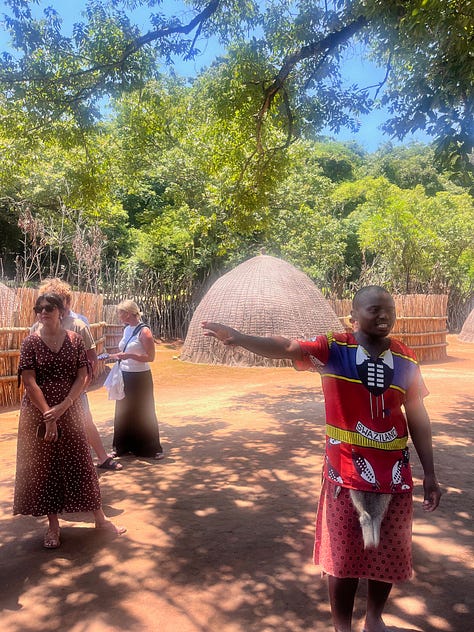




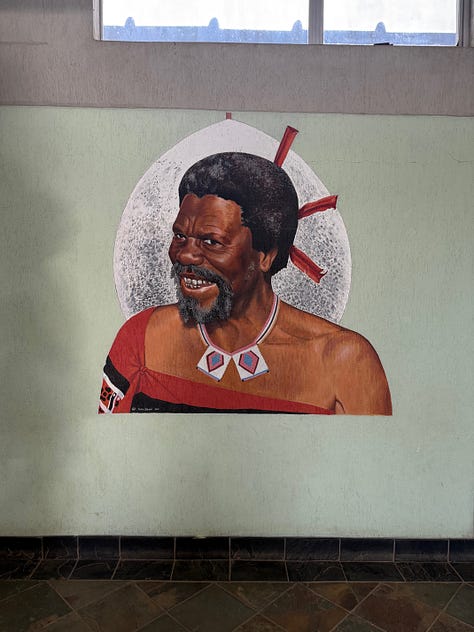
The Swazi Candle lights. The Swazi Candle Factory is a fun stop where you can watch skilled artists shape candles into Savannah animals—think elephants, giraffes, and rhinos. Once molded, they hand-paint each piece in bold, vibrant colors that bring them to life. The detail is so remarkable, you’ll likely hesitate to ever light one (melting an elephant’s trunk feels a bit wrong, doesn’t it?).
While I didn’t buy a candle, the market just outside the factory was packed with cool, locally made products. You’ll find hand-carved wooden sculptures, colorful clothing with traditional prints, and photo books. It’s the kind of place where creative shoppers can happily lose themselves for a while. Of course, you'll also spot the usual pan-African souvenirs—Maasai dolls from Kenya, masks from Congo—but if you're after something truly Swazi, it’s worth digging a little deeper to uncover the real gems.
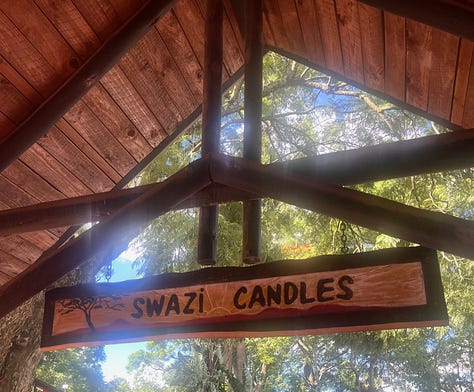
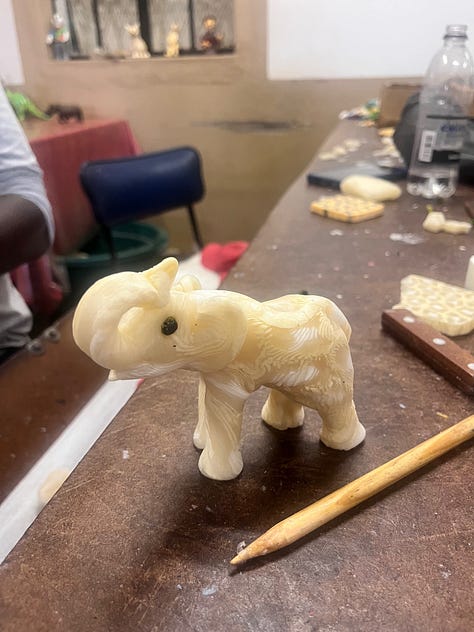
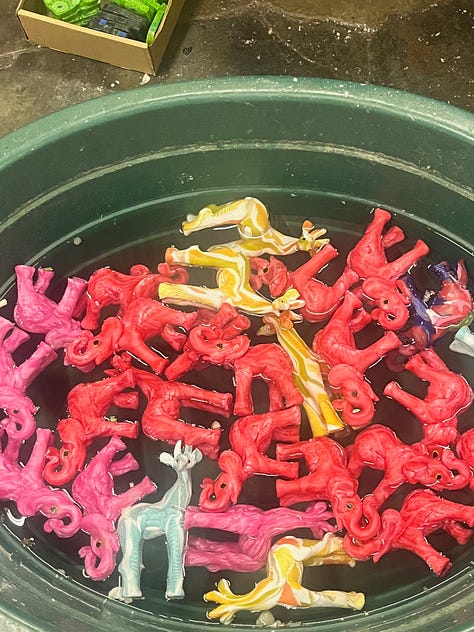
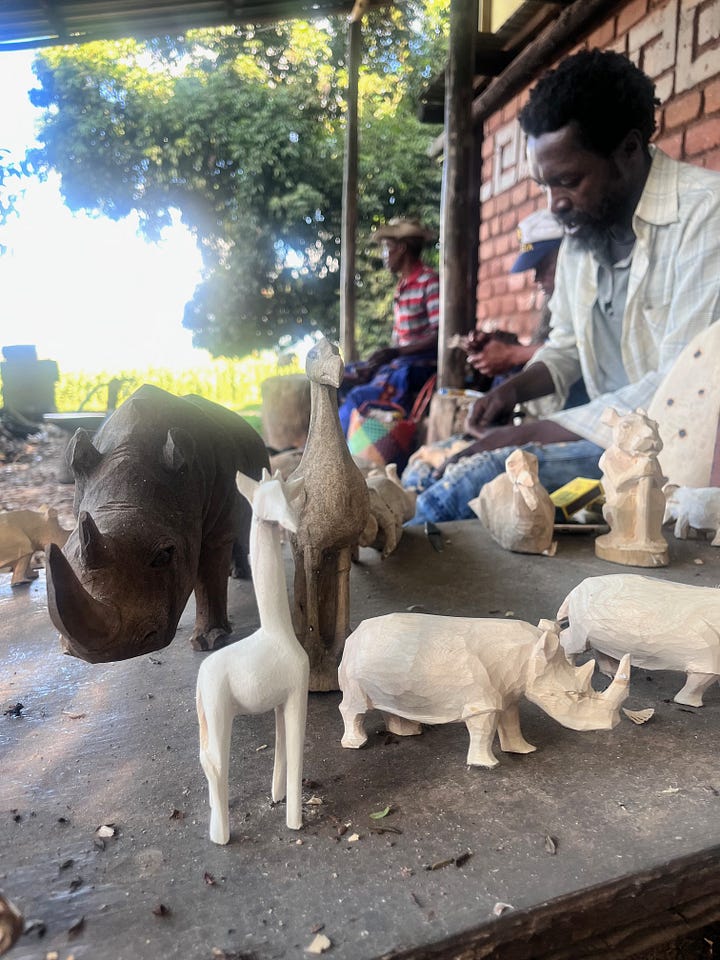
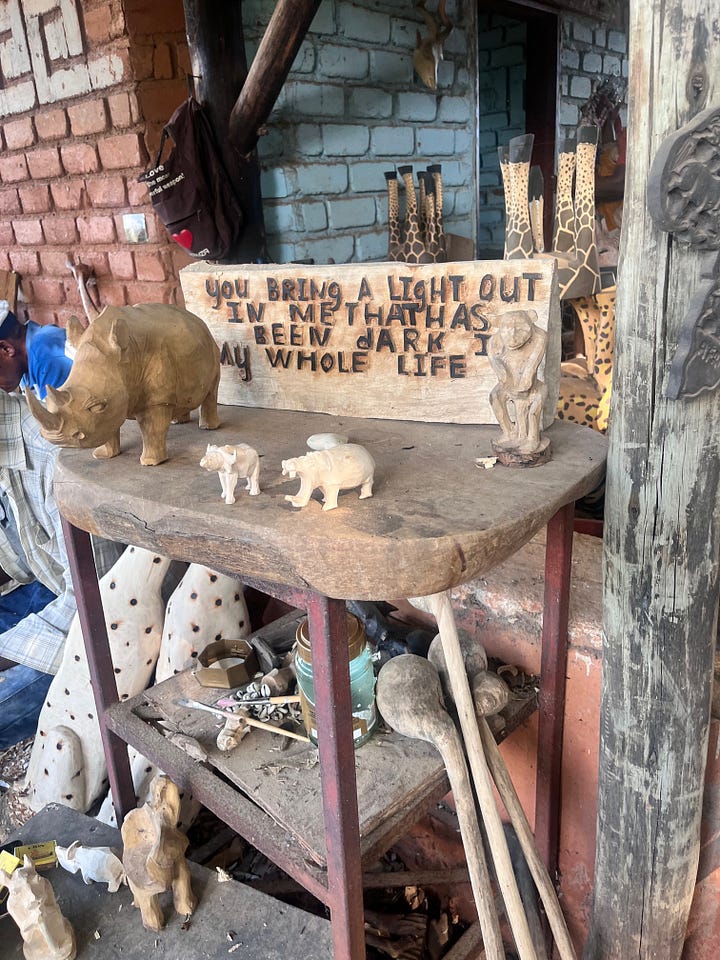
Eswatini knows how to throw a party—and not just one kind
Eswatini is home to some unforgettable festivals, each with its own unique energy. There’s the Bushfire Festival, often described as Eswatini’s answer to Burning Man. Think bold outfits, electronic beats, and a creative, almost otherworldly atmosphere. Then, there’s the Amarula Festival, which embraces more eco-tourism vibes, featuring a mix of global indie and pop music (yes, fueled by generous servings of the creamy liqueur it’s named after)
And finally, the Incwala Festival one of the most sacred traditional festivals in Eswatini, where you’ll hear powerful local drumming and hymn-singing—more of a spiritual ritual than a concert, but still packed with rhythm and energy. I didn’t actually attend any of these festivals myself. As someone whose playlist usually includes Taylor Swift, Coldplay, and Adele, I figured I might not quite fit the scene.
Tourism Gold/Royalmine. King Mswati III and his family’s royal lifestyle is undeniably fascinating. With 15 wives (yes, you read that right), and each living a life of luxury—think palaces, Rolls-Royces, and high-end luxury brands. The first two wives are chosen by the elders, but every year, the king gets to select another new wife during the Reed Dance. This isn’t your average dance competition—young (virgin) women from all over the country participate in this traditional dance and compete for the king’s attention. Whoever catches his eye gets the opportunity to trade in her life for a palace.
The royal lifestyle, however, remains heavily guarded—no media or unauthorized individuals are allowed to enter without prior permission. The secrecy surrounding the royal family creates an enigma, leaving citizens and tourists alike with a sense of wonder and curiosity
If the country could find a way to share this unique aspect of royal life with visitors while preserving tradition, it could become a major tourist attraction?—a fun and fresh way to showcase everything Eswatini has to offer. Think of it like The Real Housewives of Beverly Hills—but with a royal twist. Netflix might want to document that?
Royal Welcome/Goodbye
Every time I land in a new city, the airport gives me a little preview of what I’m in for. In New Delhi, I’m greeted by a sea of people and a pair of folded hands—basically the perfect summary of the city, warm hospitality and a crowd of chaos. In the U.S., before I even leave the arrivals hall, I’ve already spent $5 on a luggage trolley—hello capitalism.
Landing (or leaving) Eswatini tells you its story. The first and last thing you see are three portraits: King Mswati III, the Queen Mother, and the Prime Minister, arranged in descending height like a royal staircase. It’s not just décor—it’s a royal welcome and a regal send-off. No slogans, no flashy ads—just a quiet, powerful reminder of who holds the spirit of the nation.
Closing reflection; Must half a day/one day stop for tourists in South Africa, or region. Its all smiles, amd smiles.

